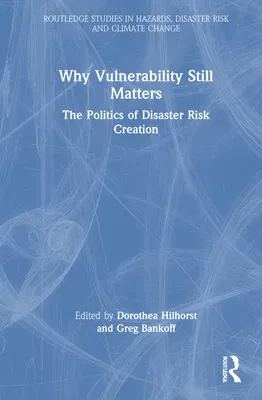Why Vulnerability Still Matters: The Politics of Disaster Risk CreationHardcover, 28 April 2022

Qty
1
Turbo
Ships in 2 - 3 days
Only 2 left
Free Delivery
Cash on Delivery
15 Days
Free Returns
Secure Checkout

Part of Series
Routledge Studies in Hazards, Disaster Risk and Climate Chan
Print Length
240 pages
Language
English
Publisher
Routledge
Date Published
28 Apr 2022
ISBN-10
1032113413
ISBN-13
9781032113418
Description
Product Details
Book Format:
Hardcover
Country of Origin:
US
Date Published:
28 April 2022
Dimensions:
23.39 x
15.6 x
1.6 cm
ISBN-10:
1032113413
ISBN-13:
9781032113418
Language:
English
Location:
Oxford
Pages:
240
Publisher:
Weight:
535.24 gm